Postgraduates of Biological Chemistry, Biophysics and BioengineeringSociety
Research
The Inositol Lipid Signalling Laboratory
PI: Nick Leslie
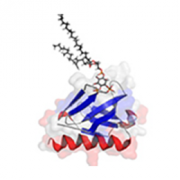
Our lab studies complex regulatory networks, in particular a set of proteins that work together, termed the ‘PI 3-Kinase signalling network’ and an enzyme within this network called PTEN, problems with which are a root cause of about 30% of human cancers. Our goal is to understand how these complex networks drive cancers and thus to support the development and optimal application of drugs that change their activity.
The Biological Dielectrics Group
PI: Gerard Markx
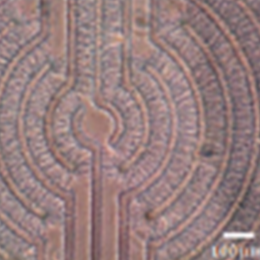
Our main expertise is in physical cell manipulation and characterisation methods, and their applications in biotechnology/bioprocessing. Current work concentrates on the application of micromanipulation and microfabrication techniques in marine microbiology; we also do some work on fermenter monitoring and control.
The Cellular Bioprocessing Group
PI: Nik Willoughby
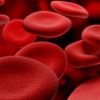
Our research group is currently focused on scalable purification and separation of stem cell-based cellular therapies. Under the BBSRC BRIC initiative we are investigating scalable separation of human adult and embryonic stem cells and have we have just started a major SFC-funded project looking at developing a manufactured hESC-derived replacement for donated blood. In addition, we are involved in sustainability strategies to reduce CO2 emissions from chemical and biological plants using novel techniques based around cyanobacterial photosynthetic fixation. We are also developing techniques to produce added-value protein and bioenergy products within the brewing and distilling industry.
The Biomedical Microengineering Group
PI: Will Shu
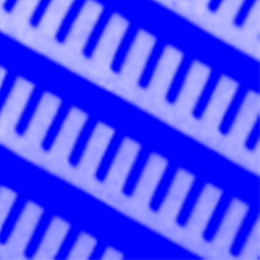
The Biomedical Microengineering Group is an interdisciplinary research group focusing on applying engineering principles to the challenges of understanding biology, creating new technology to manipulate and understand micro-organisms. Central to the research of this group is modifying microfabrication technologies for biological applications. Microfluidic chips, (often Lab-on-a-chip devices) are concerned with miniaturization and integration of laboratory processes and experiments into single chips, are commonly developed by group members. The interdisciplinary nature of the research carried out by the group combines material sciences, clinical sciences, medicine, surgery, electrical engineering, mechanical engineering, optical engineering, chemical engineering, and biomedical engineering. Some of the major applications for the research include genomics, proteomics, point-of-care diagnostics, tissue engineering, and implantable microdevices.
The Particle Tracking and Image Analysis Group
PI: Weiping Lu
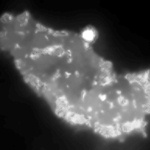

We work with biologists in the area of Physics and Life Sciences Interface to develop advanced computational techniques for analysing fluorescence microscopy images. We have developed new image processing methods capable of detection and tracking of transport particles within biological live cells under low SNR environments. We are also developing novel computational super-resolution techniques which enable us to use standard optical microscopes to obtain images with resolution at many times below the diffraction limit.
The Biophotonics Group
PI: Lynn Paterson


The Biophotonics group’s research is the application of light-cell interactions to enhance interrogation, sorting or manipulation of single cells. We are developing optical methods to improve the high throughput isolation, screening and culture of marine microbes to enhance the discovery of novel bioactive compounds. We are also developing novel fibre traps to enable optical tweezing without the use of high numerical aperture microscope objective lenses.
The Advanced Microscopy Group
PI: Paul Dalgarno
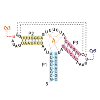

The Advanced Microscopy Group specialises in the development and application of novel imaging techniques for the life sciences. A key part is the application of physics, optics and astronomy techniques to fluorescence microscopy, speci cally lifetime imaging, super-resolution three dimensional imaging and clinical endoscopy. Experimental advances are supported by the development of new software and new image processing methods. Applications include the study of autophagy, cell signalling, nano-toxicology and pathogen detection.
The Life Science Interface Laboratory
PI: Rory Duncan
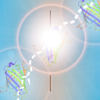


The overarching aim of the LSI laboratory is molecular imaging – the quantitative analysis of molecules in their native environment, i.e. inside living cells. To achieve maximum impact, we work at the interface with researchers from the physical sciences, such as physics, mathematics, engineering and chemistry.
The Ultrasound Group
PI: Vassilis Sboros
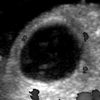

The Ultrasound Group aims to bridge physics and engineering with Life Sciences to ensure an integrated approach to multidisciplinary research. Our medium term aim is to translate our research into clinical and preclinical research applications. Our longer term goal is to broaden our activities into technology that traces biological processes spatially and temporally in vivo, as it is increasingly in demand in the clinic and the Life Science research.
The Edinburgh Super-resolution Imaging Consortium (ESRIC)


The Edinburgh Super-Resolution Imaging Consortium represents the coming together of expertise across a broad scientific spectrum from cell biologists to physical scientists with the aim to extend the boundaries of cellular imaging beyond diffraction limits in order to investigate cellular function and human disease. ESRIC provides an openly accessible resource with the tools to address fundamental questions in human biology and disease. ESRIC houses state-of-the-art imaging technologies alongside molecular biology and cell culturing facilities, which are open to researchers from any field anywhere in the world with equal priority to all.
The Cell Biology and Protein Biochemistry Laboratory
PI: Colin Rickman



Colin’s group is focused on the study and manipulation of biological processes using light. This work divides in to in vitro research, aimed at generating new photoactivatable and photoswitchable reagents and tools, or in vivo studies, in cellular systems to study the mechanisms of insulin release and the impact of Type II diabetes.
The Single-Cell Investigation Group
PI: Graeme Whyte


This group develops novel techniques for preparing, manipulating and studying biological systems at the cellular level. We make use of microfluidics, optical trapping and advanced imaging to investigate the subtle changes as cells undergo differentiation and alterations in function. As part of this, we develop tools to measure the mechanical properties of single cells which provides a rapid, label-free method to monitor functional changes.
The Multi-Object Tracking Group
PI: Daniel Clark
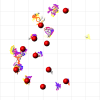

This group develops novel techniques for preparing, manipulating and studying biological systems at the cellular level. We make use of microfluidics, optical trapping and advanced imaging to investigate the subtle changes as cells undergo differentiation and alterations in function. As part of this, we develop tools to measure the mechanical properties of single cells which provides a rapid, label-free method to monitor functional changes.
The Microfluidic Biotech Group
PI: Helen Bridle
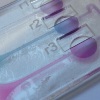

Our interdisciplinary group develops microfluidic tools for clinical (blood processing and diagnostics) and environmental (water treatment and monitoring) applications. Taking advantage of fluid flow properties at the microscale we provide innovative solutions to overcome the present limitations in those fields. We also work towards integrating microfluidic systems with other technologies to provide portable point-of-use sample processing devices.
The Clinical Microfluidic lab
PI: Maïwenn Kersaudy-Kerhoas


Our lab focuses on miniaturising sample preparation for clinical applications. We are in particular interested in miniaturised blood plasma extraction at low to medium volumes (100 μL to several mL). We are collaborating with biologists and clinicians to validate our advances.
The Biomaterials Fabrication Group
PI: Ferry Melchels
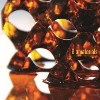

We develop polymer biomaterials and use 3D printing techniques to fabricate these into bioresorbable biomedical devices. The polymer materials are tailor-made to be processable with a specific fabrication technique, and the resulting structures are designed to have properties specific to the application. We focus in particular on shape memory polymers, scaffolds for tissue engineering, and delivery systems for drugs and vaccines.
The Atomic Force Microscopy – Biomechanics Group
PI: Iwan Schaap


We use force spectroscopy methods, like atomic force microscopy and optical trapping, to study the relation between mechanics and function of biomolecules. Our research interests range from single proteins, to viruses and whole cells.

